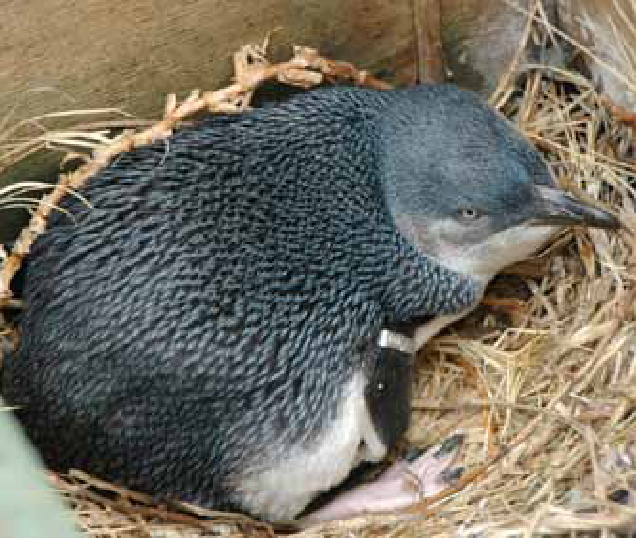Australia's Coastal Wilderness
澳大利亚沿海原野区
With over 200 kilometres of easily accessible walking trails, this hidden pocket of Australia's endless coastline is where you can get close to and share your love of nature. Immerse yourself in the natural beauty of tall forests, lakes and beaches in this unspoilt coastal wilderness. This world-class landscape comprises over 31,000 square kilometres of Australia's spectacular coastal wilderness, stretching across marine reserves, national parks, state forests and private lands and encompassing wild waters, spectacular cliffs, sandy bays, coastal heathlands and sub temperate rainforest.
DISCOVER A TRULY DIVERSE WILDERNESS
The UNESCO World Biosphere Reserve-listed Croajingolong National Park and Nadgee Nature Reserve are home to more than 50 mammal, 1,000 plant and around one third of Australia's total bird species. They provide important habitat for threatened species suchasthe ground parrot and the long-nosed potoroo.
Extensive river networks, fresh and saltwater lakes, estuaries and swamps provide ideal opportunities for kayaking, boating and canoeing, as well as spotting elusive creatures such as the platypus. Wetlands attract 40 species of migratory seabirds and waders while coastal heathlands and woodlands attract hawks, eagles and falcons.
Point Hicks Lighthouse
Lieutenant Zachary Hicks on board Captain Cook's Endeavour first sighted Australia's east coast in 1770 at Point Hicks.The Point Hicks lightstation was built in 1890 and is adjacent to Croajingolong National Park, making Port Hicks ideal fortaking a walk and watching out for seals, birds, dolphins and whales.
FEEL THE EARTH'S HEARTBEAT IN THE SHADOW OF THE MOUNTAINS
The ancient landscape is a place of significant cultural and ceremonial importance for the Yuin Nation - the traditional owners ofthe land - with pathways, mountains and streams telling of rites of passage and traditional law.
At the setting of the sun, Mt Dromedary, also known as Gulaga - the mother mountain, throws her shadows across the earth. Born from the violent collision of three tectonic plates, Gulaga is the remains of an ancient volcano. She radiates with life, with her fertile soils attracting plants, animals and humans alike.
The Yuin people say that Gulaga's eldest son Barrunguba left the side of his mother to discover more of the world. Known by the Europeans as Montague Island, today he stands proudly off the shore guarding the fish and whales and taking care of the more than 30,000 birds that nest on the island. Hisyounger brother Najanuga (Little Dromedary) lies protected in the skirts of his mother, watching his eldest brother in the distance.
MEETING OF THE WATERS
Boasting an abundance of marine life, Australia's remote coastal wilderness is the dramatic meeting point for the warmer waters of the north and the colder waters of the south. The turbulent waters and varying ocean temperatures (rangingfrom 12 degrees centigrade in winterto 25 degrees in summer) create one of the most diverse marine ecosystems in the world.
The region is recognised as a hotspot of whale activity, with a total of 16 species found at different times of year. The annual southern migration of humpback whales from October to December draws visitors from across the globe.
澳大利亚沿海原野区
在澳大利亚无垠的海岸线深处,200多公里的步行小道隐秘其中,在这里您可以零距离领略自然之美,全身心投入这片未受破坏海岸原野之中的密林、湖泊和沙滩。
这一世界级的景观包括超过31,000平方公里的澳大利亚壮观沿海原野,横跨海洋保护区、国家公园、国家森林和私人土地,内含野生水域、壮观的悬崖、沙质海湾、沿海荒地和亚温带雨林。
真正多样的原野发现之旅
克拉金固隆国家公园和纳吉自然保护区位于联合国教科文组织世界生物圈保护区,为50多种哺乳动物、1000多种植物、全澳大利亚三分之一鸟类品种提供了栖息之所。这两个区域也是濒危物种,如地鹦鹉和长鼻蹼的家园。
广阔的河流网络、淡水和咸水湖、河口和沼泽区域为皮划艇、划船和独木舟之旅提供了很好的场所,游客也可在此观赏到诸如鸭嘴兽等隐居动物。这块湿地吸引了40种候鸟和涉禽鸟,而沿海荒地和林地则吸引了鹰和隼。
希克斯角灯塔
1770年,在希克斯角,扎卡里•希克斯中尉在库克船长的奋进号上第一次看到了澳大利亚东海岸。希克斯角灯塔建于1890 年,毗邻克拉金固隆国家公园,是散步和观赏海豹、鸟类、海豚和鲸鱼的理想之地。
在山脉阴影之下感受地球的律动
古老大地是游英族重要的文化和仪式场所。游英族是这块土地的传承者,这里的道路、山川和溪流都同他们的成人仪式和传统律法联系在一起。
日落时分,卓美达里山(古拉伽山,也被称为母亲之山)的倒影洒落在地面上。古拉伽由三个构造板块剧烈碰撞而成,是一座古老火山的遗迹。这座母亲之山生机勃勃, 肥沃的土壤哺育了动植物和人类。
游英族流传着这样的传说,古拉伽的长子巴伦古巴离开了母亲身边,去探索更多的世界。今天,他自豪地站在海岸边,守护着各种鱼类和鲸鱼,照顾着在岛上筑巢的3万多只鸟类。他的弟弟纳鲁马(小卓美达里)则躺在母亲的裙尾里,看着远处的巴伦古巴。
悉尼 水域交汇之处
澳大利亚偏远沿海原野拥有丰富的海洋生物,是澳大利亚北方温暖水流和南方寒冷水流的重要交汇点。
汹涌的海水和多变的海洋温度(从冬季的12摄氏度到夏季的25摄氏度)孕育出了世界上最多样的海洋生态系统之一。
该地区是鲸鱼活动的热门区域,一年中不同时间段共发现16种鲸鱼。每年10月至12月,座头鲸的南方迁徙吸引了世界各地的游客前来观赏。



